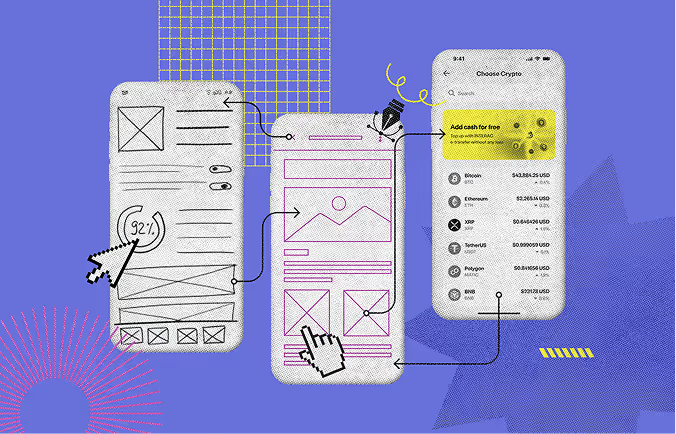
When it comes to the development of new products, the importance of prototyping cannot be taken for granted. It allows you to learn how your stakeholders and users feel about your product, identify areas for improvement, and pave the way for quality, error-free products.
In this article, we will discuss what a prototype is, the process of creating a prototype, as well as the different types and techniques of useful prototyping. Before diving into the topic, let's get clear first,
Prototyping is the process by which design teams convert ideas from paper to digital. To capture design concepts and test them on users, teams create prototypes of varying fidelity. You are able to improve and validate your designs through the use of prototypes, which ultimately helps your company release the best products.
The fourth and final step of both design thinking and design sprints is prototyping. It's the next step in the UX design process after "ideation," where you and your team come up with ideas to address user needs.
In prototyping, you make a simple model of your proposed product so you can test it and see how well it meets users' needs based on their feedback. You should consider prototyping as early as possible, using paper prototyping if appropriate, so that user feedback can guide development.
You can learn more about prototypes here- 7 Reasons Why Prototype Is a Crucial Step For the Product Development Process.
In general, a prototype is considered complete only if it possesses the following characteristics:
Design prototyping is a process of thought. The product's current visual appeal isn't the only thing you need to consider; there are also problems that need fixing. In addition, you need to be able to foresee the effects of the current product and the changes you intend to implement in subsequent versions and the final product.
These stage necessitates a significant amount of time and effort. If an adjustment is required at this stage, it can be extremely challenging to implement it. Nevertheless, it is vitally important to do so.
The fundamental concept behind a throwaway prototype is that it is built to determine the project's requirements rather than creating a design or code that is permanently fixed.
With the intention of being able to modify the design or coding as new requirements become clearer before they are fixed permanently, this prototype is made based on the initially known requirements, which are frequently nebulous.
Web applications are where extreme prototyping is most commonly applied. It frequently consists of three steps:
In incremental prototyping, various components of the system are developed independently and then connected to create a finished application. It is necessary to divide the development process into smaller, more manageable cycles. Early development of the interfaces for the various components is important because integration can occasionally prove to be a very difficult task.
You must first identify the users, define their problems, and brainstorm and select a suitable solution in the form of a product or service before deciding how to proceed with the prototyping process.
Follow These steps in the prototyping methodology to get an accurate solution-
Begin by brainstorming with your team to identify any potential roadblocks to your prototyping or product design process. Identifying these prior to designing allows you to take precautions.
Your prototype will not be able to depict all of the product's features. As a result, you may want to choose key elements that will allow you to gather as much feedback from the user as possible.
You don't have to be artistic or super talented to hand draw sketches of your design. You just need to serve its purpose. And the purpose is to have a rough idea of how the design is going to be.
When enough sketches are complete, digitize them. The first step in formalizing sketches is to create digital versions of them; you can use Adobe XD, Sketch, Framer, or Flinto to do so. The focus shifts from adding elements creatively to organizing structures to make them more interactive.
Distribute your design to partners, stakeholders, and so on. Request their feedback and mark the areas of the design that require changes based on their specifications.
Implement alterations and expand your prototype by adding new features. Once completed, you can share it with your stakeholders, partners, users, and so on for feedback.
During the early stages of design, the researcher devotes a great deal of time to design research in order to identify potential solutions to a problem faced by target customer segments. The UX researcher may develop an attachment to the solution reached through this research, which may employ multiple design research methods such as surveys, interviews, and focus and unfocus groups, among others.
Nonetheless, the researcher may have overlooked certain insights or introduced biases into the research during this process. So, it's important to test these solutions through prototyping before making the final product or service for a wider audience. This lets you get feedback and make changes based on what you learn.


